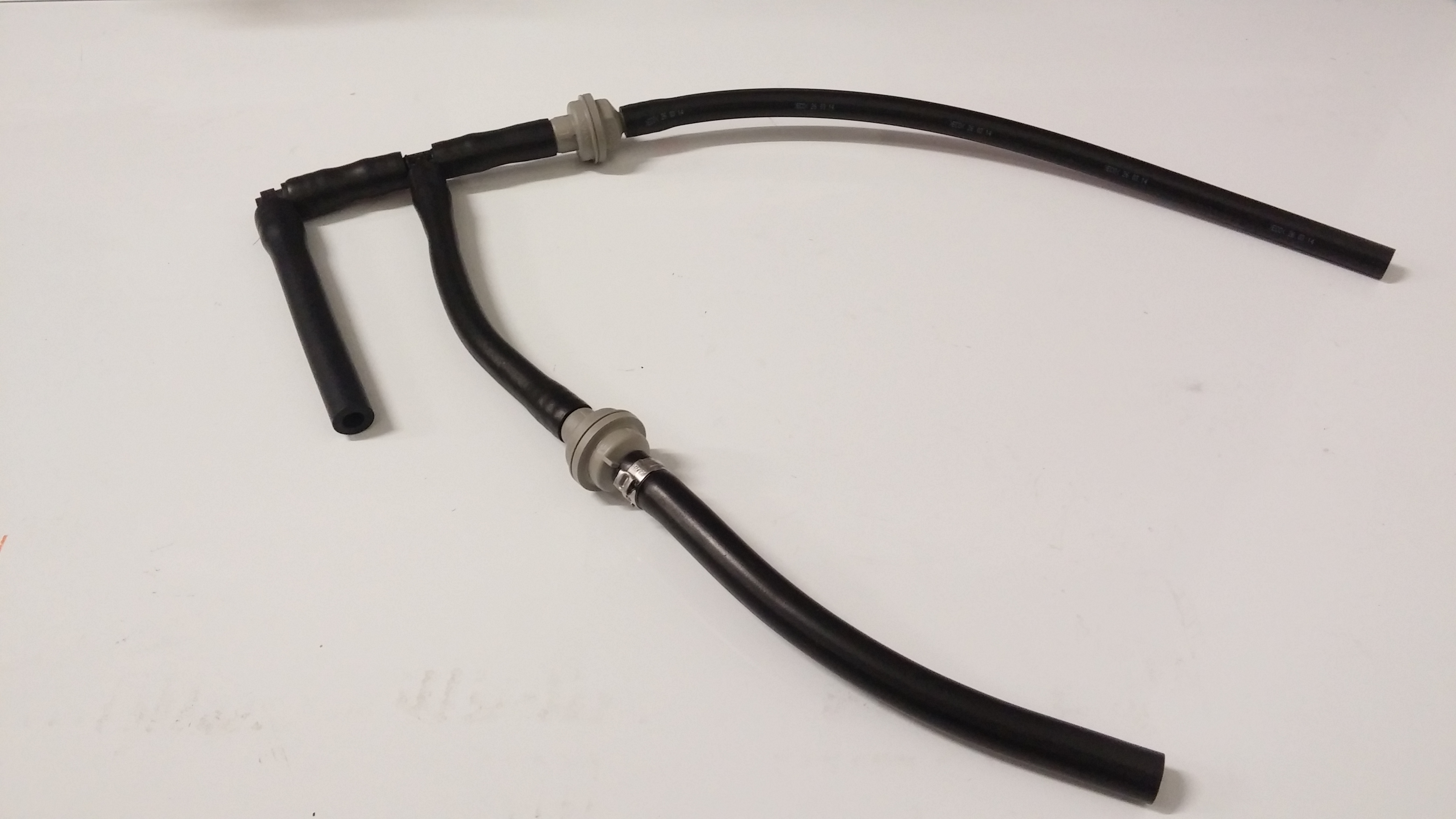sleddriver
Thread starter
I disconnected the vac line that leads to the rear of the car at the radiator purge valve and fed in low-pressure air from my airbrush compressor. I removed the gas cap and listened for air. OK. Tightened it and waited a few minutes then cracked open. No whoosh. Hmmm.
So crawled under the rear for a listen. I heard a faint hsssss. It's coming from the air filter that's zip-tied to the fuel inlet line running to the gas tank. I followed this line fwd to the shut off valve, which is then connected to the charcoal canister.
Evidently this shut-off valve controls fresh air into the system via the air filter. This valve is open with key off, allowing the tank to vent via it and the air filter.
So I put a finger over the air filter intake to let pressure build. I noticed the gas tank beginning to expand, then heard it creak due to being inflated. Removed my finger and it 'exhaled', but I smelled no gas. Did this several more times.
So if the tank IS expanding with pressure, it leads me to believe that all the gas hoses & vac lines attached to the tank are OK. Otherwise the tank couldn't hold any pressure and I'd smell gas either under the car or inside the rear hatch.
Of course, the shut-off valve could be defective or leaking. I did test it last time I went through all of this, but I'll test again. Would be great if that was it!
Ideas?
So crawled under the rear for a listen. I heard a faint hsssss. It's coming from the air filter that's zip-tied to the fuel inlet line running to the gas tank. I followed this line fwd to the shut off valve, which is then connected to the charcoal canister.
Evidently this shut-off valve controls fresh air into the system via the air filter. This valve is open with key off, allowing the tank to vent via it and the air filter.
So I put a finger over the air filter intake to let pressure build. I noticed the gas tank beginning to expand, then heard it creak due to being inflated. Removed my finger and it 'exhaled', but I smelled no gas. Did this several more times.
So if the tank IS expanding with pressure, it leads me to believe that all the gas hoses & vac lines attached to the tank are OK. Otherwise the tank couldn't hold any pressure and I'd smell gas either under the car or inside the rear hatch.
Of course, the shut-off valve could be defective or leaking. I did test it last time I went through all of this, but I'll test again. Would be great if that was it!
Ideas?



